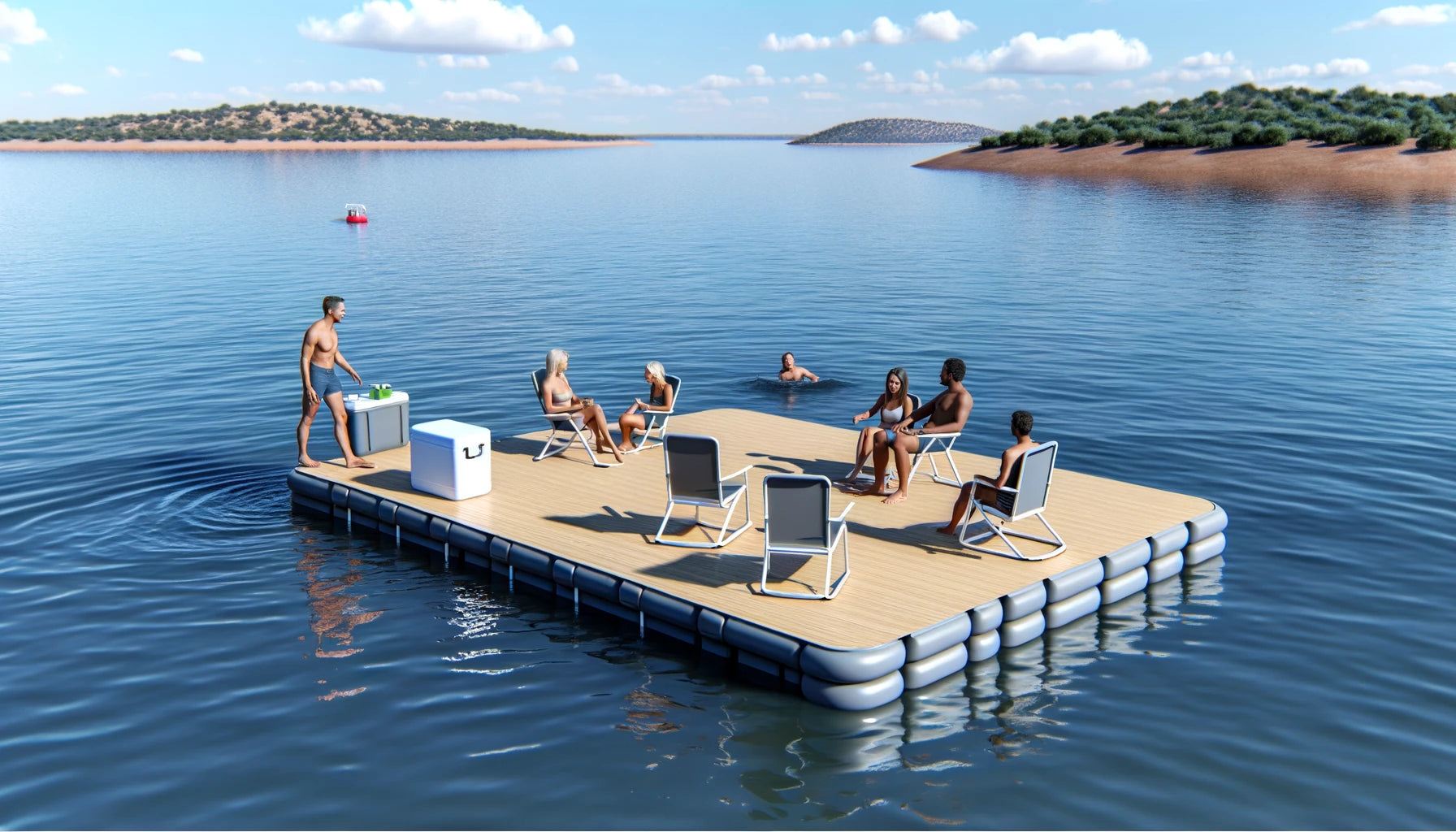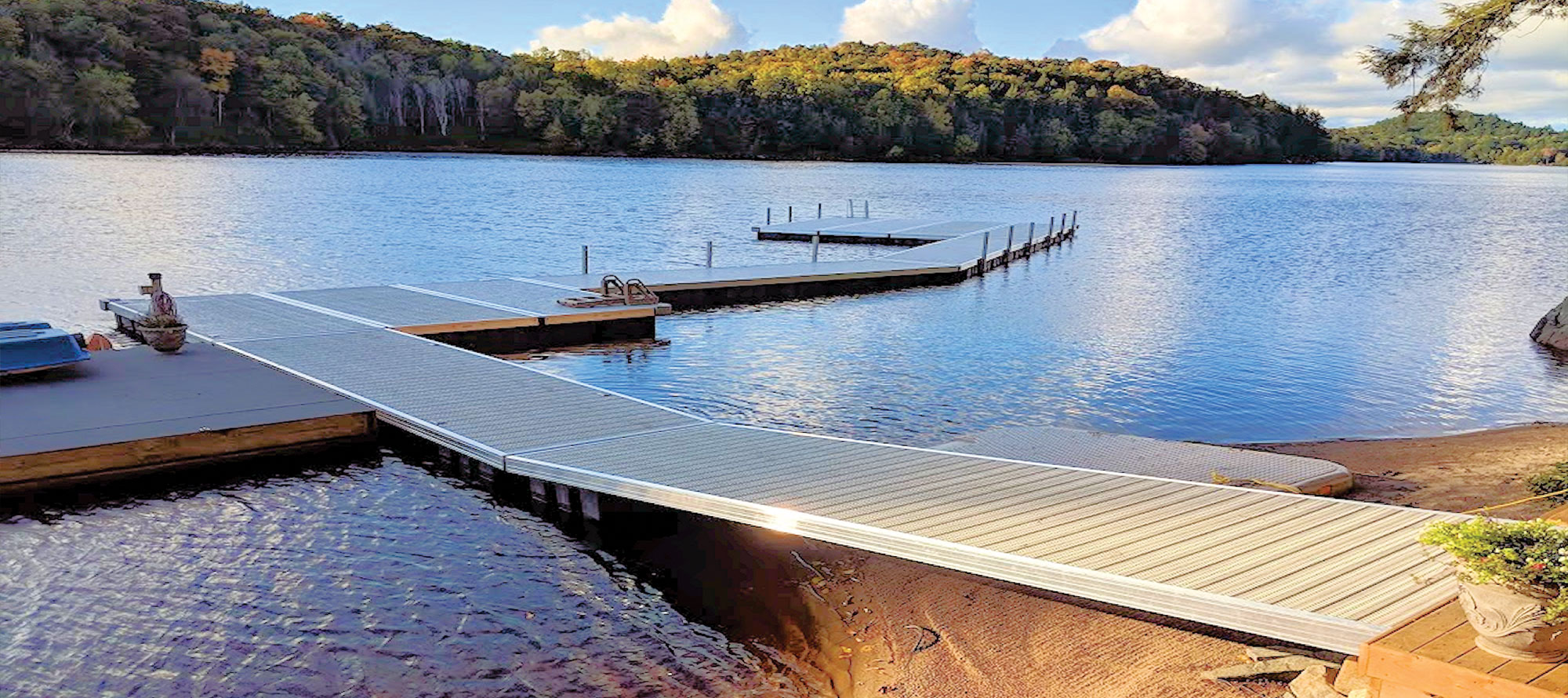Navigating the Options: Choosing the Right Dock Company for Your Floating Dock Task
Navigating the Options: Choosing the Right Dock Company for Your Floating Dock Task
Blog Article
Create the Perfect Docking Service With Floating Docks
Floating docks present a functional option for a variety of maritime requirements, adapting perfectly to rising and fall water levels and varied vessel types. As we discover the important elements that add to the effectiveness of floating docks, numerous essential variables concerning stability and upkeep will arise, raising inquiries about just how to optimize your docking experience.

Advantages of Floating Docks
Floating docks offer various advantages that make them an ideal selection for numerous maritime applications. Unlike taken care of docks, floating docks increase and fall with the tide, ensuring consistent availability for vessels.
Furthermore, floating docks are typically easier and quicker to install contrasted to standard fixed structures. Their modular layout enables simple assembly and disassembly, promoting upkeep and relocation when essential. This versatility is especially beneficial for short-lived applications or in settings where conditions might alter.
Floating docks additionally have a tendency to be much more eco friendly, as they minimize interruption to the seabed and surrounding marine ecological communities. Their resilient nature decreases the threat of damages to marine life, promoting a much healthier atmosphere. Furthermore, these docks can be tailored to fit numerous vessel sizes, making certain that they satisfy details operational demands - floating dock builder.
Inevitably, the mix of adaptability, convenience of installment, and environmental considerations makes floating docks a highly effective option for a variety of maritime needs.
Picking the Right Materials
Choosing the appropriate materials for floating docks is crucial to make sure resilience, security, and long life. The option of products directly affects the dock's efficiency in different ecological problems, consisting of direct exposure to water, sunshine, and prospective wear from aquatic web traffic.
Typical products utilized for floating docks include aluminum, timber, and high-density polyethylene (HDPE) Light weight aluminum is lightweight, corrosion-resistant, and calls for marginal upkeep, making it an exceptional selection for longevity. Its initial cost can be higher contrasted to various other materials.
Wood, while aesthetically appealing and providing a traditional look, can be at risk to rot and pest damage if not properly dealt with. Using pressure-treated timber or naturally durable varieties like cedar or redwood can alleviate these issues.
HDPE is a popular selection as a result of its resistance to UV rays and chemicals, together with being ecologically friendly. floating dock services. It is lightweight and readily available in numerous colors, enabling personalization
Ultimately, the appropriate material selection will rely on specific needs, including budget plan, desired looks, and environmental factors to consider. Careful analysis of these elements will certainly lead to a resilient and effective floating dock service.
Layout Factors To Consider for Stability
When making floating docks, guaranteeing security is a basic facet that can significantly impact their functionality and safety and security. Security in floating dock design is influenced by different variables, including buoyancy, weight distribution, explanation and the arrangement of elements.
Weight circulation is critical; equally dispersing tons across the dock prevents turning and improves stability. Larger designs can supply boosted stability, especially in rough water problems, while longer docks might call for extra supports to protect against drooping.
One more key factor to consider is the ecological effect, including wave activity and wind. Including attributes such as sidewalls or skirting can assist reduce the effects of ecological pressures, preserving stability in adverse problems. Inevitably, a combination of thoughtful layout, product selection, and understanding of environmental factors will generate a drifting dock that satisfies both stability and security demands.
Setup Tips and Strategies

Next, secure the required licenses and abide by local policies, which may dictate installation methods and ecological factors to consider. Involve a certified service provider experienced in floating dock installments if called for. Use premium products developed for marine atmospheres to improve sturdiness and durability.
When positioning the dock, straighten it identical to the coastline to assist in simple gain access to. Guarantee that the anchoring system is robust, employing concrete blocks or helical supports to support the dock against wind and wave action. It's crucial to represent seasonal water degree fluctuations, including potential ice activity in cooler climates.
During the installation, double-check the dock's floatation and security before wrapping up the anchoring. Consistently evaluate the setup for any indicators of wear or damage. By following these techniques and pointers, you can accomplish a secure, practical, and aesthetically pleasing floating dock installment that satisfies your demands.
Upkeep and Care Guidelines
Caring and maintaining for floating docks is critical to extending their life expectancy and ensuring secure usage. Routine assessments should be carried out to determine any kind of indicators of wear, damage, or marine growth. Try to find cracks, loose fittings, or tarnished locations on the dock's surface area, as these issues can compromise structural stability.
Cleansing is important. Utilize a stress washing machine to remove algae, barnacles, and debris, which can collect with time. For stubborn growth, take into consideration environmentally pleasant cleansing agents that won't hurt marine life.
Additionally, examine the mooring lines and supports regularly to guarantee they are safe and secure and totally free from corrosion. Change any kind of torn or harmed lines immediately to preserve stability.
Throughout extreme climate, such as storms or freezing problems, take preventive measures. Safeguard the dock with extra mooring lines and, if practical, remove any kind of removable elements to stop damage.
Verdict
In verdict, the implementation of floating docks offers a effective and versatile docking solution ideal for different maritime applications. With proper installment and normal upkeep, floating docks can offer reliable and trusted docking experiences for a broad range of vessels.
As we discover the essential aspects that add to the effectiveness of floating docks, numerous key elements concerning security and upkeep will arise, raising questions regarding how to optimize why not try this out your docking experience. Unlike repaired docks, floating docks surge and fall with the tide, ensuring consistent access for vessels.When developing floating docks, guaranteeing stability is a fundamental aspect that can considerably affect their performance and safety and security. Stability in floating dock style is influenced by different elements, consisting of buoyancy, weight distribution, and the plan of components. Ultimately, a mix of thoughtful design, material option, and understanding of environmental variables will certainly yield a drifting dock that satisfies both security and safety and security requirements.
Report this page